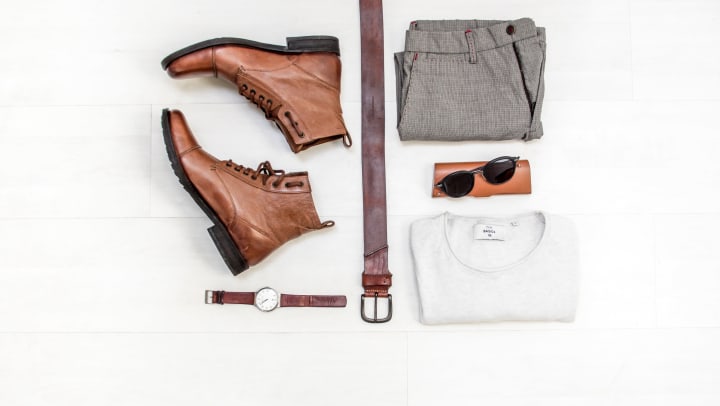Are you moving house? Firstly, Congratulations on your move! A new home signifies new beginnings and lots of good things for your life and family. That said, we're sure you must be under quite some pressure organizing the move. Amid all this bustle, many often underestimate one item, assuming they'll just pack and shift them easily — clothing.
Clothes are one of the largest categories people have to move, constituting a massive percentage of your house overall. And it truly dawns on people how much they own when it's time to clear a closet. However, it's no problem if you know how to pack clothes for moving! Organizing your clothes correctly at the beginning could make your move much easier and less stressful in the long run.
Sorting your clothes
Ideally, you should do this about a couple of days before your move date.
We suggest doing this in Marie Kondo's style (all credit to the Queen of Clean). Make a HUGE pile of everything clothing and closet-related in the center of your room and start sorting. While you probably can't decide if your clothes "spark joy" since you have a schedule to keep, you can certainly segregate them more practically. Set up three bins. Name them Keep, Launder/Repair, and Discard/Recycle/Donate.
In the Keep bin, toss all your essentials, daily wear, work, and formals.
Your Launder/Repair bin simplifies things by letting you see how many of your clothes are in good or bad condition. You can also include seasonal wear, furnishings, bedding, and upholstery.
Anything that needs to be professionally laundered or dry-cleaned goes in this pile. Separate those items out now so you can send them out for laundry, taking a literal load off your shoulders.
The Donate/Recycle pile is what you will see progressively growing larger — clothes that don't fit, older styles, sentimental keeps, and so on. Donate things in this pile to charities, and you'll be surprised at how much the things you need to transport lighten up.
Pack essentials for the moving period
When considering how to pack clothes for moving, you'll be packing different items in different ways—some clothes you'll need immediately easy access to, and some you might be able to put in long-term storage, like in an attic or self-storage unit.
Now that you've got your clothes sorted and two piles of three out of your way, get your suitcases out and pack the essentials you will need for the duration of your move before settling down in your new home.
Include daily wear, clothing you use while doing heavy-duty work, formal clothes for work and school uniforms for kids, night clothes, undergarments, cleaning and care, socks, hankies, and more. Do include some products for instant laundry/stain removal.
Pack like you would for a trip, and ideally pack for at least two weeks, as that may be the rough amount of time you'll need to travel, settle down in your new place, and function comfortably. We suggest adding mothballs, camphor, or your favorite fragrance to keep your clothes smelling fresh.
Separate clothing items based on wearer, usage, material, and occasion
The remaining clothes need to be sorted. You, your significant other, kids, and the elderly each need their own items packed and labeled separately. It sounds tedious, but you will thank yourself for not having to search for Junior's bib in the middle of a move. When packing clothes for moving, a little preparation on the front end saves a lot of time on the back end.
Begin by sorting out piles for each person. Once they're separated, divide them further based on the material they're made of and the usage and occasion. For example, suits and cocktail dresses, silks, and winter wear go in separate piles.
Packing method: Fold | Roll | Hang
Once you've sorted clothes out, you'll know which clothes need to be crease-free and which can be casually folded up.
- Ideally, suits, cocktail dresses, formalwear, etc., need to be hung up to preserve them. Get suit holders and dress bags with hangers for these.
- Use wardrobe boxes to hang these clothes upright for your move. Tie the hangers with a cord for each person's collection to keep them together.
- Some clothes may be more robust, so you can simply roll them into bundles, military-style. These can go into boxes, duffles, or suitcases.
- Lay out delicate clothing (silk, satin, etc.) in packing paper. They can go into clothes boxes to preserve their shape.
- Bundle up sets of clothing you wear regularly. Layer the largest items, like a set of jeans, and add a top, an over-shirt, and smaller garments, and simply roll them together. They can again be packed in boxes, suitcases, or duffels.
- Put off-season clothes (like winterwear) into clothes bags and vacuum seal them.
- Clothes that do not need to hang can simply be folded flat and put into a box/bag. You can use packing cubes and label them to stay organized.
Packing accessories: Jewelry | Shoes | Bags & belts | other wearables
Jewelry: Keep valuables with your personal luggage in a secure lockable box for maximum safety.
Shoes: These items need to be separated, cleaned, and stored inside shoe boxes or drawstring bags. Ensure they are clean and dry, and stuff the inside of the shoe with newsprint.
Belts: These items can be gathered and corded through the buckle to keep them together. They can be wrapped in tissue, rolled up, and placed inside a drawstring bag.
Bags: Clean and stuff the bags with packing paper to preserve the shape, and add moth balls and silica drying sachets. Fold and secure the handles with an elastic band, so they don't tear or tangle.
Ensure all items are well-labeled so they can be moved out in batches.
Packing Materials
When you're packing, suitcases and duffels may not suffice. Here's a general list of items to have handy when packing clothes for moving:
- Cardboard boxes (double-ply and smaller size for carrying convenience)
- Suit and gown bags with hangers.
- Vacuum-seal bags for winter clothing
- Tissue and clothes boxes for delicates
- Silica gel drying sachets
- Mothballs
- Drawstring bags (plastic and cloth-based)
- Packing paper
- Shoe boxes and hat boxes
- Suitcases and duffels
- Lockable secure box for valuables
It isn't necessary to have all of them, and with some creativity, you can swap things around if you need to.
Pack Clothes for Long-Term Storage
You may have clothes that should go directly into long-term storage—these may be clothes you're saving for hand-me-downs or seasonal clothing like winter items that you won't be needing for several months. In this case, using a long-term self-storage unit is the best way of keeping things safe and out of the way. You can simply leave clothes packed in boxes without worrying about dust and climate-related dangers or hang clothes up on an inexpensive rolling clothes rack.
Pack for Shipping style
If your furniture includes dressers and wardrobes, it can be tempting to leave the clothes inside as is and simply lock them so the packers can carry them as-is.
Check this with your movers when packing clothes for moving and the mode of transport you're using for the best method. If your packers can ship your wardrobe as is, this is a good idea, as it saves you a lot of hassle.
Safety and Cleanliness
Laundering clothes before you move helps you move into your new house fresh. Silica gel sachets and moth balls keep clothes clean and dry as it takes time to settle into a new house. This is important because any number of accidents can happen during transit, and clothes can gather dust and smell moldy.
Unpacking systematically
We'll say it again: an essential part of how to pack clothes for moving is just being organized and having a plan. The most important thing you need to do is stay organized and inventory all your items as you move. This way, you'll know which clothes belong to each family member, which clothes move with your luggage, and which categories go with your packers.
Clothes, especially delicates and special occasion clothes, can avoid wear and tear when left in their packaging.
This way, it's easy to stash away off-season clothes and unpack them later. Based on your checklist, you can unpack and set up daily wear items, separate your occasion wear, jewelry and shoes, and unpack them when you need.
Packing clothes — organized now, sorted later
Planning and proper packing methods ensure your clothes can safely get through just about any kind of move and arrive safely. When you know just how to pack clothes for moving in a way that keeps them safe and organized, things are so much easier when the clothes arrive at their final destination. We hope these tips make your move to the new place a truly seamless experience.


